The Benefits of Particulate Respirator Breathing Mask Use to Human Health
Stepping outside you may be exposed to a vast number of people that are strapped with breathing masks securely placed on their faces to protect their respiratory system from potentially harmful pollutants in the air. Air particulate respirator breathing masks have become a more prevalently purchased and used form of protection for human health, especially when it comes to the respiratory system and potential pollutants that can be inhaled from different indoor and outdoor environments. According to the Environmental Protection Agency (EPA), indoor air can be two to five times more polluted than outdoor air, and therefore it may be necessary to wear the proper respiratory protection when you are exposed to certain confined indoor space such as airplanes, buses, and buildings.
There are a variety of different pollutants that can be found present in the air that you are constantly breathing in such as combustion byproducts, allergens, biological agents, pesticides, lead, asbestos, ozone, and even various volatile organic compounds (VOCs). All of these pollutants can all have their varying impacts on human health, depending on the amount of exposure and the length of exposure to these pollutants. Therefore, when you are planning to go in an environment where pollutants are known to be at an elevated concentration in the air, you may want to consider arming yourself with a protective breathing mask to shield exposure to these airborne pollutants.
In this article we are going to learn more about the benefits of particulate respirator breathing masks, discuss the differences between the various types of face masks, and determine how these masks can filter out certain pollutants to protect human health.
Why Do People Wear Breathing Masks?
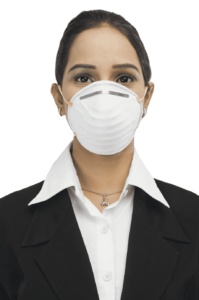 Have you ever stopped to consider why it is that people wear breathing masks? You may see it on an airplane, walking the street, or even in buildings such as hotels or airports, but what really is the reason behind the rising popularity of face masks? Protective face masks are typically worn by people as a means to protect themselves from foreign pollutants and substances that can enter their body and cause adverse health effects, in most cases. In some instances, however, face masks are worn by people who have an illness (such as the flu, the common cold, or even the new pandemic virus called the coronavirus) that are trying to contain the spreading of their germs into an environment that other people may become exposed to in the air space.
Have you ever stopped to consider why it is that people wear breathing masks? You may see it on an airplane, walking the street, or even in buildings such as hotels or airports, but what really is the reason behind the rising popularity of face masks? Protective face masks are typically worn by people as a means to protect themselves from foreign pollutants and substances that can enter their body and cause adverse health effects, in most cases. In some instances, however, face masks are worn by people who have an illness (such as the flu, the common cold, or even the new pandemic virus called the coronavirus) that are trying to contain the spreading of their germs into an environment that other people may become exposed to in the air space.
Respiratory breathing masks have seen an increase in sales with the large volume of individuals that have become sickened with the flu, and most recently now the pandemic coronavirus that many residents in Wuhan, China and around the world are trying to protect themselves from in their environment. According to the Washington Post, the new coronavirus (2019-nCoV) has now reached 17,228 confirmed cases in China, and additionally the World Health Organization (WHO) has confirmed 23 cases of the strain outside of China – which has led to fear and concern throughout the world. However, when it comes to guarding the respiratory system from airborne illnesses, will the traditional dust mask work or will it require the use of a high-quality respirator mask?
How Long to Wear Breathing Mask
Typically, when we think about respirators or breathing mask, most people will be referring to particulate respirators that are the simplest, least expensive, and least protective type of face mask. These masks protect against particles that are present in the air such as allergens like dust, pet dander, etc. Often mistaken for when talking about particulate breathing masks, N-95 filtering face masks are a type of respirator masks that works against particulate removal, but it can also be used in hospitals or other environments to protect against infectious agents in the air. These masks, similar to any other type of face masks, will make breathing more difficult than breathing in open air, and thus people who have certain conditions like lung disease or asthma, the elderly, and other individuals with breathing problems may have a harder time breathing with these masks on their face.
The length of time that a breathing mask will last and will allow for an individual to wear it will depend on a number of factors. Firstly, how much filtering capacity the respirator has, as well as the amount of hazardous pollutants in the air that it must mitigate. It makes logical sense that the more pollutants and hazards that a breathing mask have to filter the shorter its lifespan will become for use.
Dust Mask vs Respirator
 When it comes to distinguishing the differences between a common dust mask and a respirator, many people will have a hard time understanding the comparisons between these two misidentified protective masks and how effective they are in mitigating pollutants. Dust masks are flexible pads that are held over the nose and mouth by an elastic or rubber strap to protective against dust that’s encountered in environments such as construction sites and cleaning activities. These masks are a cheaper, lighter, and more comfortable alternative to respirators; however, they do not provide as much protection as a respirator mask does when used in an environment.
When it comes to distinguishing the differences between a common dust mask and a respirator, many people will have a hard time understanding the comparisons between these two misidentified protective masks and how effective they are in mitigating pollutants. Dust masks are flexible pads that are held over the nose and mouth by an elastic or rubber strap to protective against dust that’s encountered in environments such as construction sites and cleaning activities. These masks are a cheaper, lighter, and more comfortable alternative to respirators; however, they do not provide as much protection as a respirator mask does when used in an environment.
Whereas a respirator mask is a personal protective device that is worn on the face and covers the nose and mouth. This face mask is used to reduce the individual’s risk of inhaling hazardous airborne particles, gases, and/or vapors from the air. These respirators are more durable than traditional dust masks, due to their composition and that they are made out of cloth-like material that has a higher durability.
What Type of Face Mask Should I Use
When it comes to determining or deciding what type of face mask you should use to protect yourself from potentially hazardous airborne pollutants in the air, there should be many factors to consider that will help you in selecting the ideal breathing mask. There is an array of air pollution face masks currently available on the market, each different and containing specific capabilities when it comes to filtering airborne pollutants from an environment. Some of the major differences to look at when analyzing the various types of face masks to wear to protect your respiratory system and health, according to the Canadian Centre for Occupational Health & Safety, will include the following;
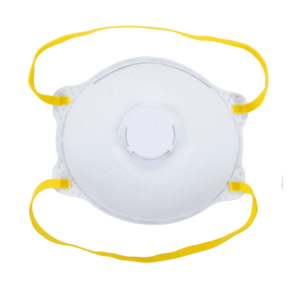 Pollutant Removal Capabilities: When comparing the two most popular types of face masks, respirators and surgical masks, the most important aspect to look at is its overall capabilities at removing pollutants from the air. Respirators are designed to protect individuals from exposure to airborne particles, including exposure to biological aerosols like viruses and bacteria. Whereas a surgical mask will simply act as a barrier to splashes, droplets, and airborne liquids – like spit.
Pollutant Removal Capabilities: When comparing the two most popular types of face masks, respirators and surgical masks, the most important aspect to look at is its overall capabilities at removing pollutants from the air. Respirators are designed to protect individuals from exposure to airborne particles, including exposure to biological aerosols like viruses and bacteria. Whereas a surgical mask will simply act as a barrier to splashes, droplets, and airborne liquids – like spit.- Fit & Seal on Face: The fit of a face mask on your face is a critical component to the success of the mask in protecting an individual from pollutant exposure. If you have a face mask that does not have a proper seal over your face (nose and mouth) than this may be a sign that the face mask is working ineffectively. Respirators, specifically, are designed to create a seal tight fit to the face of the wearer – therefore offering an effective protection from airborne pollutant inhalation/ingestion. A surgical mask, on the other hand, are not designed to seal a tight fit against the face and offers less protection against airborne pollutants.
- Filtration: The filtration capabilities of a protective face mask is these most important component of a face mask. The filtration capabilities of a respirator will include an ability to collect up to 95% of aerosols in the air, giving it a rating of 99.97% collection of pollutants in the air. A surgical mask is able to filter out larger particulate matter but is ineffective at filtering small particles from the air.
- Use Limitations: A respirator mask will generally have a single use, and these masks should be discarded after they become damaged or deformed, will no longer seal to your face, becomes wet or dirty, breathing through the mask becomes difficult, and/or bodily fluids contaminate the mask. Whereas a surgical mask is a one-time use mask that should be discarded after its use the first time.
Different Types of Pollution Masks
As we have learned, pollution masks are worn on the face to help protect an individual against exposure to pollutants in the air that can be a potential source of adverse health effects. These types of masks will work to filter out these airborne pollutants so then an individual avoids exposure to them through inhalation/ingestion into the body. There are a variety of different pollution masks that are available to consumers in the market today, among these options the top three types that are most prevalently used include N95 respirators, N99 and N100 masks, and P95 masks.
Below we are going to learn more about these different types of pollution masks and understand how they differ from one another when it comes to pollutant mitigation.
- N95 Respirator: One of the most well-known types of face masks, an N95 respirator is an affordable and effective air mask for filtering fine particulate matter from the air. N95 masks filter particulate matter PM5 with a 95 percent efficiency, and thus its popular use in many different environments. These masks are prevalently used as a preventative measure to guard an individual from potentially hazardous airborne pollutants that they may come into contact within their environment(s). Typically, these N95 respirator masks will be portable and easily folded within a purse or bag to transport. Although there are many benefits to a N95 respirator, there are also downfalls of it as well such as the fact it cannot be used for a very long period of time (usually 2-3 days of use).
- N99 and N100 Masks: N99 and N100 masks may be two of the most effective masks due to their ability to filter PM5 airborne particulate matter from the air with up to a 99 to 99.97% efficiency. These masks come in a variety of sizes and will also have the ability to be used for a longer period of time (usually 5 to 6 months of use). These two masks are able to be folded and washed, but unlike N95 respirators they will not be able to filter out oil-based air pollutants.
- P95 Masks: P95 masks are designed to be resistant to oil-based contaminants and are usually used in industrial settings instead of personal use due to their higher price tag. Additionally, these masks don’t last long, and will typically only be used for one day and need to be replaced after about 8 to 9 hours of use in the environment.
When to Use a Face Mask
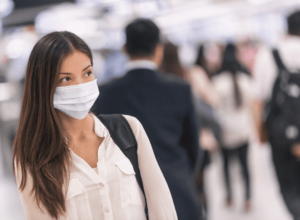 The indoor or outdoor environment that you are planning to be exposed to can be known spaces that have an elevated level or risk of pollutant exposure that an individual may wish to avoid for health purposes. Many of these environments can be tainted by various conditions such as natural disasters (wildfires, volcano eruptions, etc.), working conditions (laboratories, nail/hair salons, factory workers, etc.), close contact with people in an enclosed space (trains, cars, plants, elevators, hospitals), and even people who live near or in a construction site. No matter where you are it is important to learn more about the risks of pollution exposure in this space and determine if a face mask would be the best way to protect your health from these specific pollutant inhalation/ingestion in the human body.
The indoor or outdoor environment that you are planning to be exposed to can be known spaces that have an elevated level or risk of pollutant exposure that an individual may wish to avoid for health purposes. Many of these environments can be tainted by various conditions such as natural disasters (wildfires, volcano eruptions, etc.), working conditions (laboratories, nail/hair salons, factory workers, etc.), close contact with people in an enclosed space (trains, cars, plants, elevators, hospitals), and even people who live near or in a construction site. No matter where you are it is important to learn more about the risks of pollution exposure in this space and determine if a face mask would be the best way to protect your health from these specific pollutant inhalation/ingestion in the human body.
How to Pick the Best Particulate Respirator Mask
Having an arsenal of reliable particulate respirator masks on hand will be a great source of protection that you can easily grab and utilize whenever you are exposed to an environment that’s air quality may be compromised. Whether you have to go into a construction zone inside of your home or office, are traveling by plane, train, or bus, or even if you are concerned about acquiring airborne viruses or bacteria in the air while in compromised environments – regardless of where you are it may be beneficial to arm yourself with an effective particulate respirator mask to shield yourself from these airborne pollutants. When talking about the different types of particulate respirator masks that are available for purchase by consumers, each of these masks will have different capabilities that will make them lucrative to use in a compromised environment. However, when determining how to pick the best particulate respirator mask, you will want to do some research on how well the masks stack up against particulate matter, noxious odors, and chemical pollutants that are present in various air spaces.
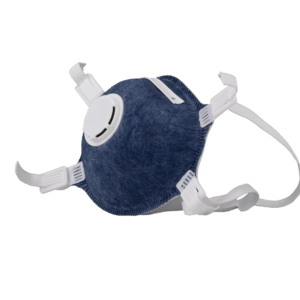 The EnviroKlenz Breathing Masks for Pollution is a type of pollution face mask that offers a revolutionary solution to chemically dismantling the vast majority of irritating fumes and chemical compounds that are present in the air before they ever reach your nose or mouth. The masks were originally designed to service those people with chemical sensitivities, which are some of the most sensitive individuals when it comes to chemical and pollutant exposure in their environments, attesting to the technological efficiency of the EnviroKlenz Breathing Masks to filter out a variety of pollutants (chemical pollutant, odor pollutants, and particulate matter) in the air. The EnviroKlenz technology contained within these face masks is a proprietary blend of earth minerals that works to effectively capture, contain, and neutralize various airborne pollutants upon contact with the technology in the face masks filter before it reaches an individual. The EnviroKlenz technology has been proven to filter out smog, VOCs, cleaning fumes, pollen, dander, offending scents, dust, and spores, among other things. Most importantly the EnviroKlenz Breathing Masks are reusable, lightweight, and comfortable (and latex free).
The EnviroKlenz Breathing Masks for Pollution is a type of pollution face mask that offers a revolutionary solution to chemically dismantling the vast majority of irritating fumes and chemical compounds that are present in the air before they ever reach your nose or mouth. The masks were originally designed to service those people with chemical sensitivities, which are some of the most sensitive individuals when it comes to chemical and pollutant exposure in their environments, attesting to the technological efficiency of the EnviroKlenz Breathing Masks to filter out a variety of pollutants (chemical pollutant, odor pollutants, and particulate matter) in the air. The EnviroKlenz technology contained within these face masks is a proprietary blend of earth minerals that works to effectively capture, contain, and neutralize various airborne pollutants upon contact with the technology in the face masks filter before it reaches an individual. The EnviroKlenz technology has been proven to filter out smog, VOCs, cleaning fumes, pollen, dander, offending scents, dust, and spores, among other things. Most importantly the EnviroKlenz Breathing Masks are reusable, lightweight, and comfortable (and latex free).
The EnviroKlenz Breathing Masks have a mini air filtration device that covers the most vulnerable parts of your body, your nose and your mouth. It ultimately will protect these two parts of your body from being affected by VOCs all around you, as well as a variety of other particulate matter present in the air space. Therefore, the EnviroKlenz Breathing Masks may be a premium choice when it comes to protecting an individual’s respiratory system from particulate matter exposure in the environment’s air.
Article Sources:
- Environmental Protection Agency (EPA): Indoor Air Quality (link)
- The Washington Post: What Travelers Should Know About Face Masks Amid Growing Coronavirus Concerns (link)
- Canadian Centre for Occupational Health and Safety (CCOHS): Respirators – Respirators Versus Surgical Masks (link)
- U.S. Food & Drug Administration (FDA): Masks and N95 Respirators (link)
Breathing Masks for Pollution
(3 Pack)
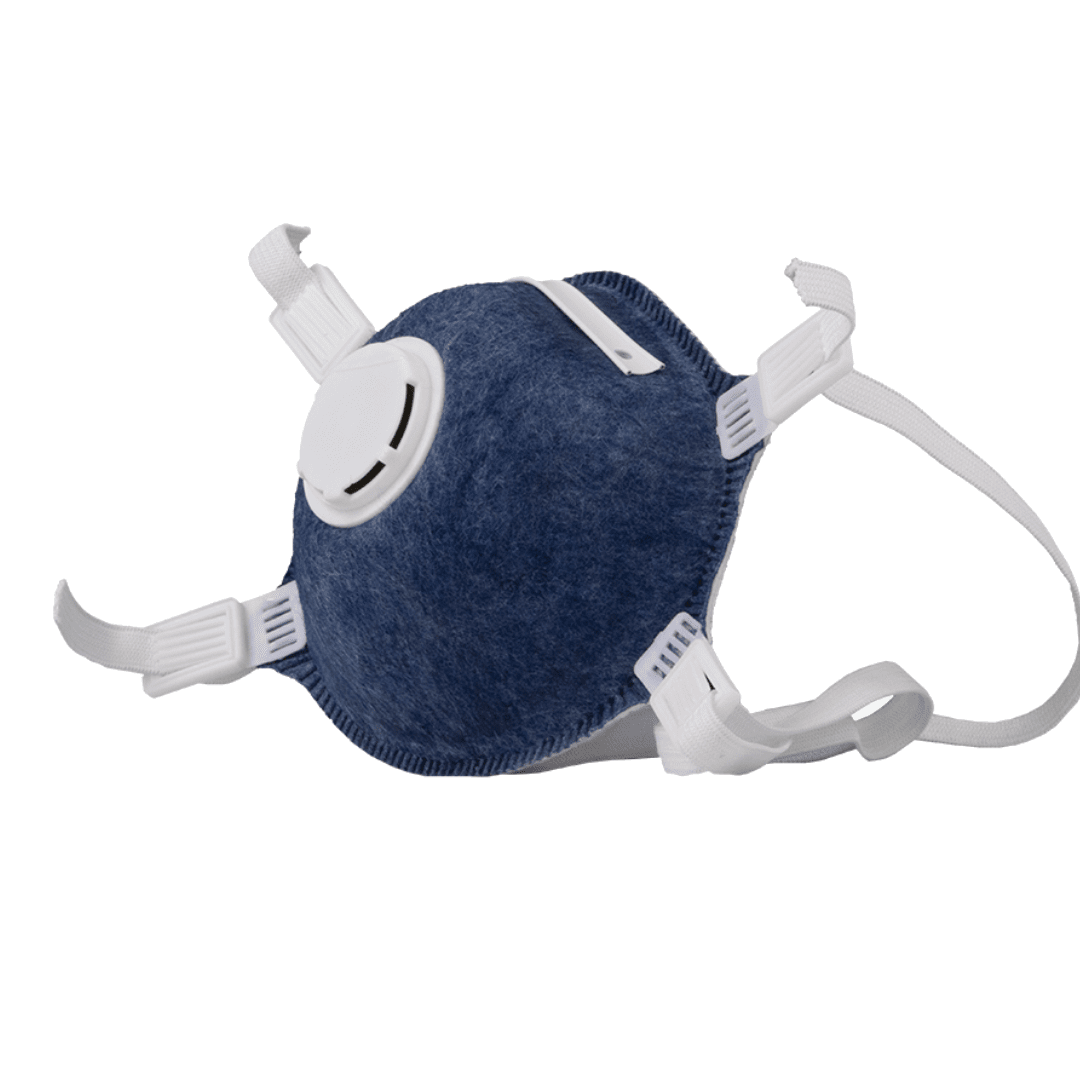
✓ Patented earth mineral technology contained in a minute air filtration device that covers the nose and mouth
✓ Works to attack VOCs and other airborne pollutants by breaking them down on a compound level
✓ Lasts up to 3 months under normal use
✓ Provides chemical odor neutralization and particulate removal
Comments
Post a Comment